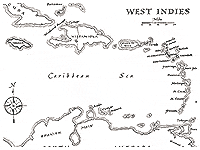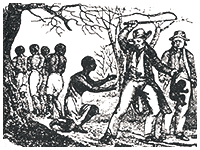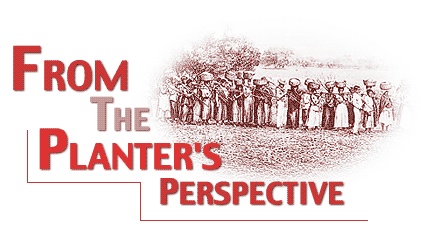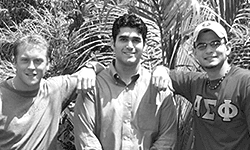 Plantation owners in the Caribbean looked to their land and slaves as the key to their wealth. In order to generate desired profits, these men had to ensure that the operations ran smoothly. A chief factor in achieving this goal was the suppression of slave resistance by the most efficient means possible. To understand how this worked, we have to look at both what the laws of various sugar colonies mandated and permitted, and what planters actually did. While laws sometimes limited the punishments that slaveowners were allowed to inflict, they were typically not enforced. Instead they provided a guidebook for the justification of cruelty. Plantation owners in the Caribbean looked to their land and slaves as the key to their wealth. In order to generate desired profits, these men had to ensure that the operations ran smoothly. A chief factor in achieving this goal was the suppression of slave resistance by the most efficient means possible. To understand how this worked, we have to look at both what the laws of various sugar colonies mandated and permitted, and what planters actually did. While laws sometimes limited the punishments that slaveowners were allowed to inflict, they were typically not enforced. Instead they provided a guidebook for the justification of cruelty.
Plantation owners and their employees generally reacted to individual and group resistance by brutally punishing the enslaved Africans. The most basic punishment was the flogging, carried out with thick leather cart-whips, leaving victims torn open and bleeding. Nevertheless, reactions to resistance by the planters took many different forms, varying from one sadistic slaveowner to the next. Some accounts report that physical mutilations were forbidden on certain plantations. Other plantation owners were exceptionally malicious and chose even more drastic actions towards slave resistance.
 The establishment and management of the slave institution in the Caribbean was done primarily through laws which both regulated and promoted the punishment of enslave Africans. These laws were continuously modified in a way that would best suppress resistance and covered broad issues. Many attempted to govern the religious, labor, and social practices of the slaves. The laws outlined the proper punishments toward various types of resistance as well as specific punishments toward those who enabled the resistance of the slaves. The establishment and management of the slave institution in the Caribbean was done primarily through laws which both regulated and promoted the punishment of enslave Africans. These laws were continuously modified in a way that would best suppress resistance and covered broad issues. Many attempted to govern the religious, labor, and social practices of the slaves. The laws outlined the proper punishments toward various types of resistance as well as specific punishments toward those who enabled the resistance of the slaves.
All in all, we can interpret the responses to slave resistance through the many sources documenting such punishments and laws. We have explored some of these sources within this website. We hope to illustrate some of the perceptions of the planters, providing the reader with a better understanding of the environment surrounding the institution of slavery on the Caribbean plantation.
|






